
The Ashes is a Test cricket series played between England and Australia. The term originated in a satirical obituary published in a British newspaper,The Sporting Times,immediately after Australia's 1882 victory at The Oval,its first Test win on English soil. The obituary stated that English cricket had died,and "the body will be cremated and the ashes taken to Australia". The mythical ashes immediately became associated with the 1882–83 series played in Australia,before which the English captain Ivo Bligh had vowed to "regain those ashes". The English media therefore dubbed the tour the quest to regain the Ashes.

Sir Leonard Hutton was an English cricketer. He played as an opening batsman for Yorkshire County Cricket Club from 1934 to 1955 and for England in 79 Test matches between 1937 and 1955. Wisden Cricketers' Almanack described him as "one of the greatest batsmen in the history of cricket". He set a record in 1938 for the highest individual innings in a Test match in only his sixth Test appearance,scoring 364 runs against Australia,a milestone that stood for nearly 20 years. Following the Second World War,he was the mainstay of England's batting. In 1952,he became the first professional cricketer of the 20th century to captain England in Tests;under his captaincy England won the Ashes the following year for the first time in 19 years.

Walter Reginald Hammond was an English first-class cricketer who played for Gloucestershire in a career that lasted from 1920 to 1951. Beginning as a professional,he later became an amateur and was appointed captain of England. Primarily a middle-order batsman,Wisden Cricketers' Almanack described him in his obituary as one of the four best batsmen in the history of cricket. He was considered to be the best English batsman of the 1930s by commentators and those with whom he played;they also said that he was one of the best slip fielders ever. Hammond was an effective fast-medium pace bowler and contemporaries believed that if he had been less reluctant to bowl,he could have achieved even more with the ball than he did.

Arthur Shrewsbury was an English cricketer and rugby football administrator. He was widely rated as competing with W. G. Grace for the accolade of best batsman of the 1880s;Grace himself,when asked whom he would most like in his side,replied simply,"Give me Arthur". An opening batsman,Shrewsbury played his cricket for Nottinghamshire County Cricket Club and played 23 Test matches for England,captaining them in 7 games,with a record of won 5,lost 2. He was the last professional to be England captain until Len Hutton was chosen in 1952. He was a Wisden Cricketer of the Year in 1890. He also organised the first British Isles rugby tour to Australasia in 1888.
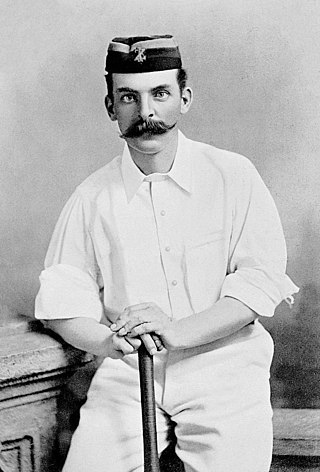
Allan Gibson Steel was an English amateur cricketer who played for Lancashire County Cricket Club from 1877 to 1893,and in Test cricket for England from 1880 to 1888. He was born in West Derby,Liverpool,and died in Paddington,Middlesex.

Robert Walter Vivian Robins was an English cricketer and cricket administrator,who played for Cambridge University,Middlesex,and England. A right-handed batsman and right-arm leg-break and googly bowler,he was known for his attacking style of play. He captained both his county and his country;after the Second World War,he served several terms as a Test selector.

Test matches in the period 1877 to 1883 were organised somewhat differently from international cricket matches today. All were between Australian and English sides,the teams were rarely representative,and the lengthy boat trip required was one that many cricketers were unable or unwilling to undertake. As such,the home teams enjoyed a great advantage.
The history of Test cricket between 1884 and 1889 was one of English dominance over the Australians. England won every Test series that was played. The period also saw the first use of the word "Test" to describe a form of cricket when the Press used it in 1885. It has remained in common usage ever since.
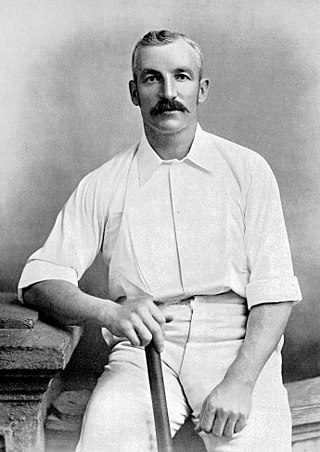
George Giffen was a cricketer who played for South Australia and Australia. An all-rounder who batted in the middle order and often opened the bowling with medium-paced off-spin,Giffen captained Australia during the 1894–95 Ashes series and was the first Australian to score 10,000 runs and take 500 wickets in first-class cricket. He was inducted into the Australian Cricket Hall of Fame on 26 February 2008.
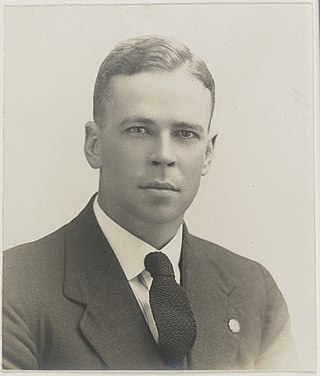
William Harold PonsfordMBE was an Australian cricketer. Usually playing as an opening batsman,he formed a successful and long-lived partnership opening the batting for Victoria and Australia with Bill Woodfull,his friend and state and national captain. Ponsford is the only player to twice break the world record for the highest individual score in first-class cricket;Ponsford and Brian Lara are the only cricketers to twice score 400 runs in an innings. Ponsford holds the Australian record for a partnership in Test cricket,set in 1934 in combination with Don Bradman —the man who broke many of Ponsford's other individual records. In fact,he along with Bradman set the record for the highest partnership ever for any wicket in Test cricket history when playing on away soil

Willie Bates,known as Billy Bates,was an English cricketer. Skilled with both bat and ball,Bates scored over 10,000 first-class runs,took more than 870 wickets and was always reliable in the field. A snappy dresser,Bates was also known as "The Duke".

Edward Ferdinando Sutton Tylecote was an English cricketer. He was born in Marston Moretaine,Bedfordshire and was educated at Clifton College and played first-class cricket for Oxford University and Kent County Cricket Club. He also played six Test matches for England. His career lasted from 1869 to 1886.

Lionel Charles Hamilton Palairet was an English amateur cricketer who played for Somerset and Oxford University. A graceful right-handed batsman,he was selected to play Test cricket for England twice in 1902. Contemporaries judged Palairet to have one of the most attractive batting styles of the period. His obituary in The Times described him as "the most beautiful batsman of all time". An unwillingness to tour during the English winter limited Palairet's Test appearances;contemporaries believed he deserved more Test caps.
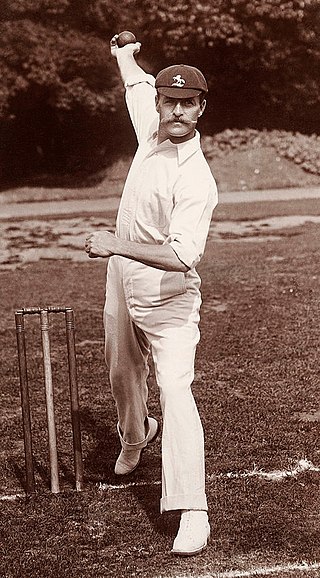
Alec Hearne was a member of the famous cricketing Hearne family. He played as a professional for Kent County Cricket Club between 1884 and 1906 and made one Test match appearance for England. He was an all-rounder who was named as one of Wisden's five Cricketers of the Year in 1894. His father,George played cricket for Middlesex during the 1860s and brothers George and Frank also played Test cricket,as did his cousin,John Thomas Hearne.
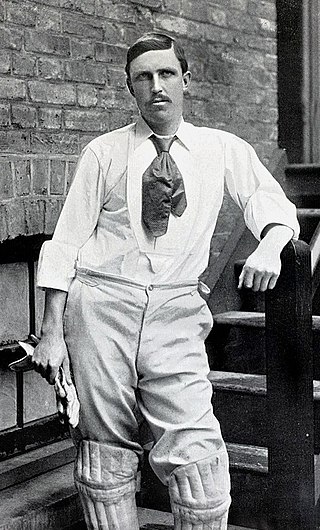
Arthur Frederick Augustus Lilley,variously known as Dick Lilley or A. A. Lilley,was an English professional cricketer who played for Warwickshire County Cricket Club from 1888 to 1911,and in 35 Test matches for England from 1896 to 1909. He was born in Holloway Head,Birmingham,and died in Brislington,Bristol.
William Walter Keeton was an English cricketer who played in two Tests in 1934 and 1939. He was a Wisden Cricketer of the Year in 1940 and played first-class cricket as a right-handed opening batsman between 1926 and 1952 for Nottinghamshire. Keeton scored a century against every other first-class county and his 312 not out made in just under eight hours against Middlesex at the Oval in 1939 is still a record for the Nottinghamshire team.
Two English cricket teams toured Australia in 1887–88. They are generally known as A. Shrewsbury's XI and G. F. Vernon's XI. Shrewsbury's XI also visited New Zealand in March.
The West Indies cricket team toured England in 1933,playing three Test matches,losing two of them and drawing the other. In all,the side played 30 first-class matches,winning only five and losing nine.

An English cricket team toured Australia and Ceylon in 1882–83. Captained by Ivo Bligh,the team was on a quest "to recover those Ashes",a reference to the famous RIP notice that was published in the aftermath of England's defeat by Australia at The Oval in the previous English season.

George Alphonso Headley OD,MBE was a West Indian cricketer who played 22 Test matches,mostly before World War II. Considered one of the best batsmen to play for the West Indies and one of the greatest cricketers of all time,Headley also represented Jamaica and played professional club cricket in England. West Indies had a weak cricket team through most of Headley's playing career;as their one world-class player,he carried a heavy responsibility and the side depended on his batting. He batted at number three,scoring 2,190 runs in Tests at an average of 60.83,and 9,921 runs in all first-class matches at an average of 69.86. He was chosen as one of the Wisden Cricketers of the Year in 1934.

















